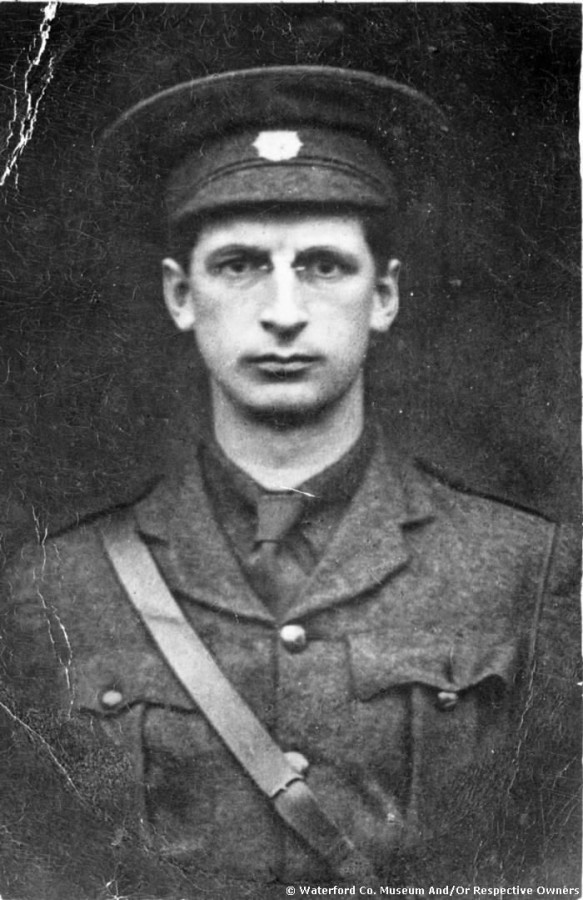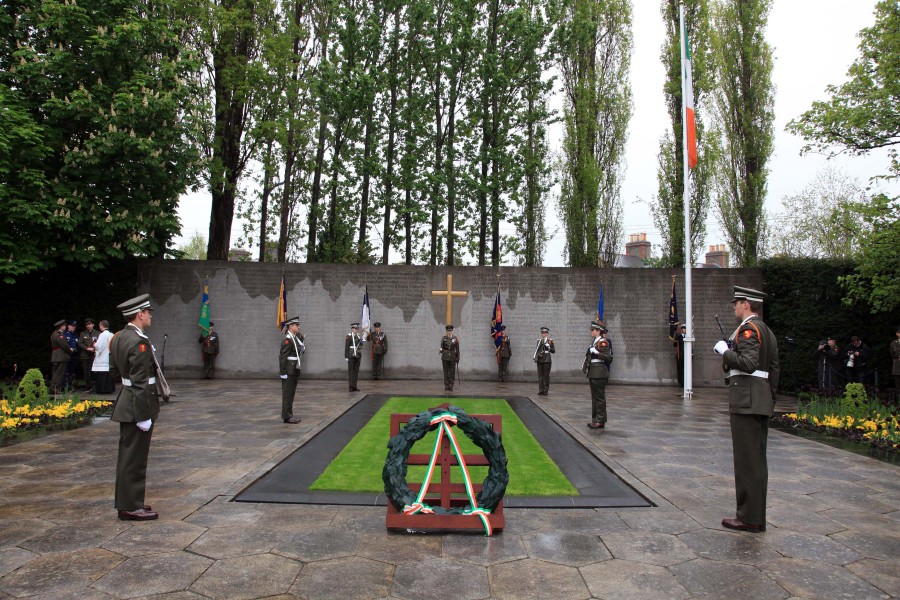
Kieran’s Our City, Our Town Article, 20 July 2017
The Wheels of 1917: Jubilation and Commemoration
July 1917 was an eventful month for Cork City with important happenings being listed in the Cork Examiner. The Cork Improvement Bill or the Ford Plant project finally received Royal Assent and became law. The solicitor of Cork Corporation Mr Galvin made the official announcement at a Corporation meeting on 12 July. The Lord Mayor, Thomas Butterfield led the congratulations and heralded a new era of industrialisation. Officials and Councillors present called for the works to start as soon as possible.
By Saturday 21 July at the Cork City Assizes, Mr Justice Pim noted that the work in the old Cork Park had started and that men were actually at work preparing the site. Judge Pim hoped for increased prosperity in Cork; “I live in the hope that this enterprise is only the forerunner of others, which the present project will call into existence, and that the old and famous city of Cork will become more prosperous and famous. Gratitude and honour is given to the man in a foreign country in the time of his success and fortune had not forgotten his old motherland and the country, which gave his father birth”.
Of political significance was the election of Éamon de Valera as an MP in East Clare. This was a by-election caused by the death of the previous incumbent Willie Redmond, brother of the Irish Party Leader John Redmond who had died fighting in World War I. De Valera joined the Irish Volunteers at their first meeting in 1913. He took part in the landing of guns from the Asgard in July 1914. He commanded the Boland’s Mills garrison in Dublin during the 1916 rising. After the surrender, he was sentenced to death, but later it was decided to sentence him to life imprisonment instead. In prison, de Valera began to show his leadership qualities. He was released from prison in June 1917.
Late on Wednesday evening, 11 July 1917 many sub-agents and representatives of the two MP candidates returned to Ennis after the close of the poll to determine with any accuracy the chances of the opposing candidates. It was quite clear from the outward signs, that de Valera’s supporters considerably outnumbered those of his opponent Patrick Lynch, the Irish Parliamentary Party Home Rule candidate. De Valera won his seat gaining over 5,000 votes.
On the front steps of the courthouse the High Sheriff made his second formal announcement of the return of Mr de Valera. It was received by sustained public cheering and the waving of many Republican flags. De Valera spoke a few words in Irish first, and as then continuing in English crying out “England has her answer”. This was part of his continued call to abandon constitutional agitation in the form of the Irish Convention (which was due to begin in late July 1917) and to turn to physical force.
De Valera expressed his gratitude to the electors of East Clare for returning him and his pleasure at being elected for such an historic constituency. There were a number of personal encounters, but the force of police, around the town of Ennis acted as a powerful deterrent against anything in the shape of a general outbreak. Bands of Sinn Féin representatives in organised formation marched through the streets at intervals, all carrying substantial sticks or cudgels. At the Sinn Féin Ard-Fheis in October 1917, De Valera was elected President of the party and at the end of the same month he was elected President of the Irish Volunteers. His first arrival to a Sinn Féin rally in Cork was on 8 December 1917.
This month, 100 years ago, a discussion also began on the commemoration on the executed Easter Rising leaders. On 16 July 1917 the Round Room in the Mansion House, Dublin was filled to capacity as the leaders of Sinn Féin demanded that the bodies of the Easter Rising leaders so that they can be given a Christian burial. Fifteen leaders of the Rising were shot in the fortnight after the Easter Rising. Fourteen were executed in Kilmainham Gaol in Dublin whilst Thomas Kent was executed in his native Cork. The bodies of the 14 were taken to Arbour Hill military prison in Dublin for burial. The remains of Thomas Kent remained in Cork Prison. The manner in which their burials were conducted caused widespread anger at the time, with Bishop Thomas O’Dwyer stating that the British had denied the men a Christian burial by burying them in unconsecrated ground. No compromise emerged.
OPW historic records outline that from 1928, the Department of Defence suggested that the OPW erect a suitable memorial in Arbour Hill Cemetery to commemorate the leaders of the Easter Rising buried there. Finally, in 1937, T J Byrne, then principle Architect at the OPW, relented. The matter was delayed until 1948, when the Department of Defence eventually passed responsibility for the plot to the OPW. By this time, Arbour Hill Cemetery was a place of pilgrimage, although it was not officially open to the public. In 1949 extensive re-landscaping took place and the present design was submitted by the Department of Defence, the government, the Arts Council and by the OPW. It was approved in January 1954, the memorial park opened in 1955, and the memorial wall by Michael Biggs was completed in 1964.
July Historical Walking Tours:
Thursday, 27 July, The Friar’s Walk, with Kieran; discover Red Abbey, Elizabeth Fort, Callanan’s Tower and Greenmount area; meet at Red Abbey tower, 6.45pm (free)
Friday 28 July, The Lough and its history, with Kieran; meet at the green on northern end of the Lough, Lough Church end, 6.45pm (free)
Captions:
904a. Éamon de Valera, 1916 (source: Waterford Museum)
904b. Cadets stand to attention around the plot of the 1916 Leaders in Arbour Hill, Dublin, present day (source: Irish Defence Forces)


